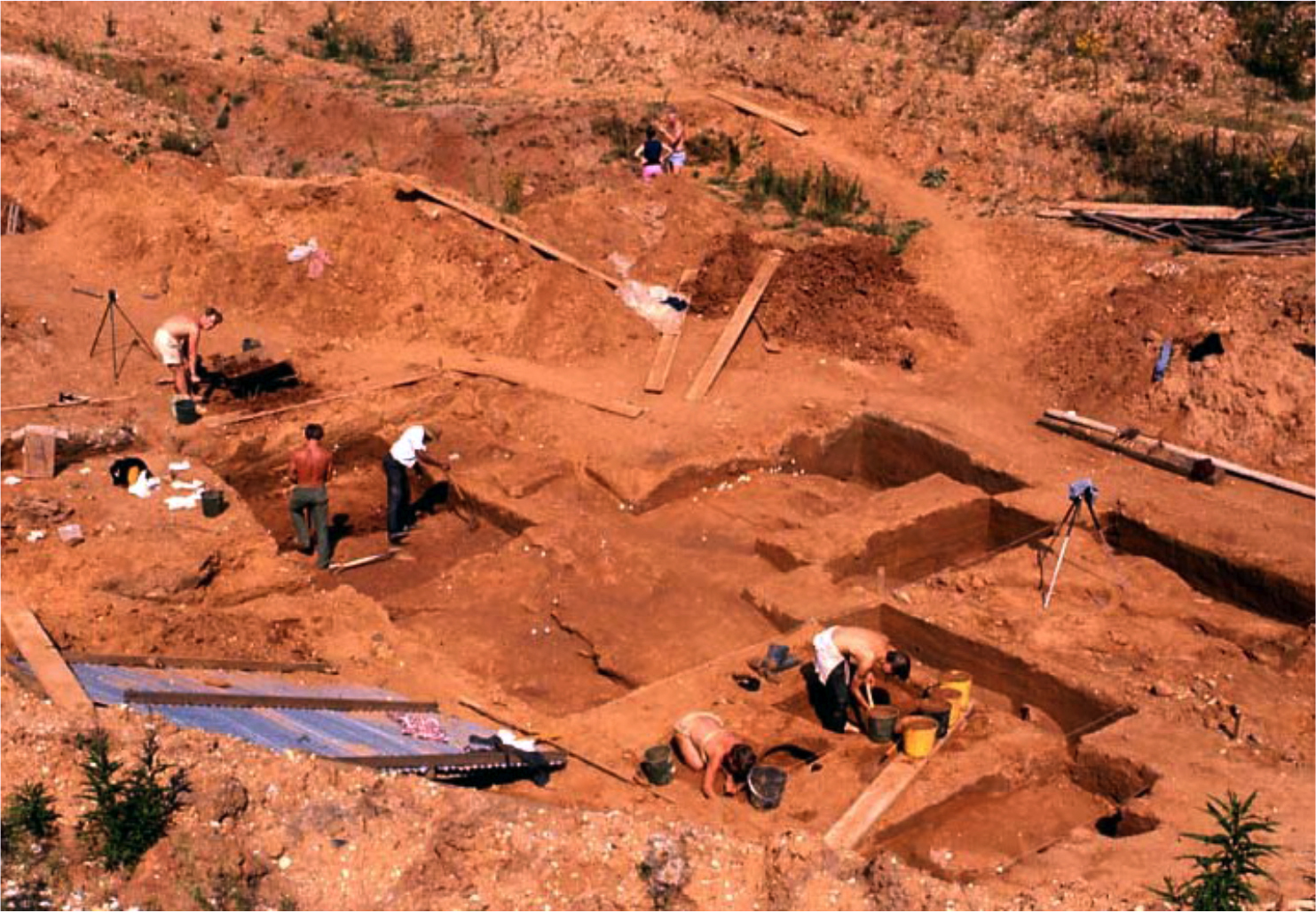
There have been investigations at High Lodge since the 1860s with various interpretations of the sequence (Whittaker et al. 1891; Marr 1921; Ashton et al. 1992). Fieldwork in the 1960s recovered the principle archaeological assemblage together with much of the biological data from the site and further investigations in 1988 established the current understanding of the geological and environmental succession. The oldest sediments at the site consist of clayey-silts laid down as overbank sediments from the Bytham river. These sediments were subject to subglacial deformation and transport, resulting in their emplacement above younger Anglian till (Lewis 1992). These are overlain by glacial sands and gravels. The glacial sediments are attributed to the Anglian glaciation of MIS 12 age, implying that the clayey silts are MIS 13 or older. A pre-Anglian age is supported by the remains of Stephanorhinus hundsheimensis (Stuart 1992). The clayey silts preserve pollen, insects with occa... [read more]
|



